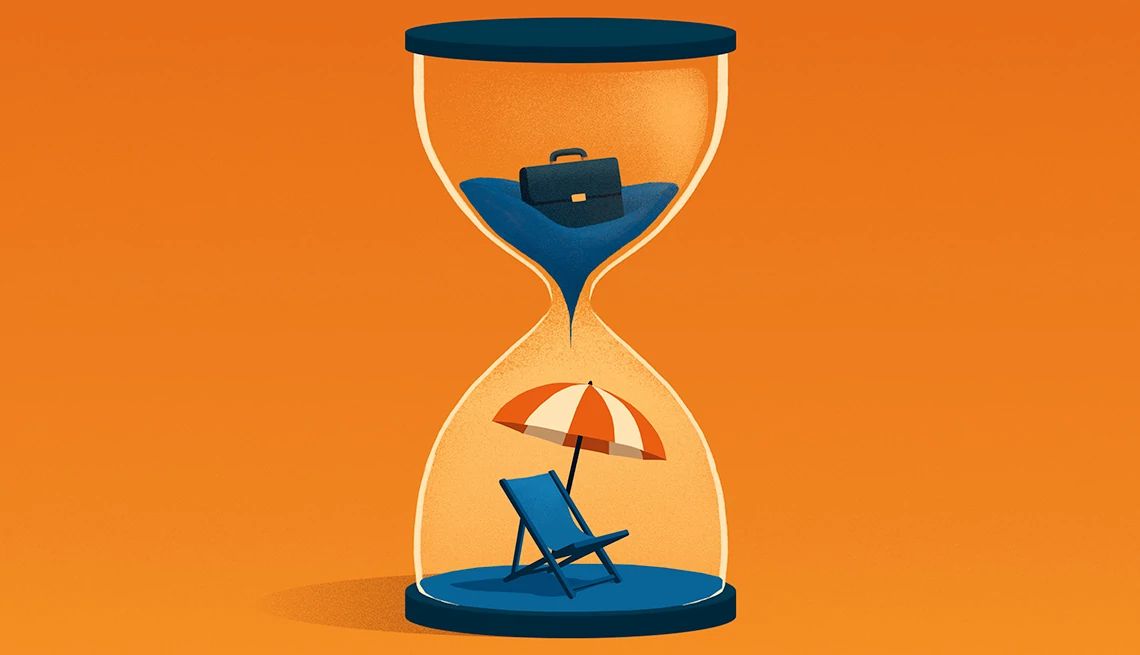AARP Hearing Center


After leading Cogun, Inc., a national faith-based construction company, out of a large debt and into prosperity, Bill Couchenour had lost the motivation to remain CEO. At the same time, Couchenour was growing increasingly inspired by the work of a nonprofit church-based organization, Exponential, that he’d become familiar with through Cogun.
In 2014, Couchenour, 68, of Clearwater, Florida, made the leap to Exponential, a move so fulfilling that only now is he seriously considering retirement. While he hasn’t set a date to stop working full-time yet (his target is within 18 months), Couchenour meets regularly with a retirement coach, Chuck Sarchione, to map out his future.
The transition from an established career toward retirement can be crucial to years of remaining productive and full of purpose. Retirement can seem like the light at the end of a long tunnel, but career coaches and economists agree the journey requires self-reflection and long-term planning to be fulfilling.
What is Phased Retirement?
Rather than moving directly from working full-time into retirement completely, many people opt to gradually reduce or change their work responsibilities. That transition period is generally known as phased retirement, partial retirement or “flextirement.” Some businesses offer formal phased retirement options to employees, but, in many, cases older workers create their own transitions to retirement.
“You have to really negotiate your own path, because there are no templates out there,” says Phyllis Moen, professor emeritus at the University of Minnesota and Cornell University, and author of Encore Adulthood: Boomers on the Edge of Risk, Renewal, and Purpose, which discusses the challenges and opportunities for older individuals working later in life.
An estimated 10,000 boomers turn early-retirement age (62) every day, and the entire generation will be at least 65 by 2030, according to U.S. Census data. The Retirement Coaches Association says the oldest members of Generation X will hit 62 in 2027, and its research suggests that 75 percent of Gen Xers are likely to struggle with some part of the transition.
Meanwhile, statistics show older Americans now prefer to work later in life than previous generations did. About 19 percent of adults ages 65 and older remain employed, compared to 11 percent in 1987, according to the Pew Research Center. “The word ‘retirement’ is probably out of date in its usage,” says Moen. “Most people don’t want to sit around and do nothing.”
For Couchenour, slowing down means working 40 hours per week and using all his vacation time. “I grew up in an era where the more you worked, the more valuable you were,” he says.
But this year’s corporate layoffs (notably, Microsoft, Starbucks and Walmart) and the federal government terminations are a reminder that workers can be unexpectedly thrust out of their jobs.
That’s among the reasons Geoffrey Sanzenbacher, an economics professor and research fellow at the Center for Retirement Research at Boston College, suggests getting in front of transition challenges. “I always tell people to ask themselves if the job they are doing now, ‘Can I do it when I’m 65 or 67?’ ” he says.
Is Phased Retirement Right for You?
Here are five steps you can take to find an off-ramp from full-time employment to retirement.
1. Think about your interests and values
While thoughts of having a more flexible schedule, enjoying your hobbies and traveling may sound appealing, many older individuals may face an identity crisis without their full-time job.


































































More From AARP
Careers
Is a ‘Flextirement’ Job a Good Fit for You?
A phased retirement position can offer flexible hours and remote workRetirement
How to Build an ‘Identity Bridge’ to Retirement
These three steps can help you smooth the transition from work and find fulfillment
Money
How to Know if You Need a Retirement Coach
Working with a pro can help you plot your next big step